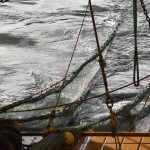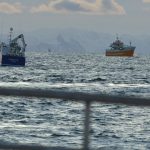It is said that the Census of Marine Life, due to be published in October 2010, will be the first of its kind. The €500+ million project is a hugely ambitious and informative venture that has been undertaken by 2,000 scientists in 82 countries. The main purpose of this project is to provide an authoritative snapshot of what inhabits our waters and where, as well as contrasting this against what we have known from historical sources.
The Census reveals a far more complex marine system than was previously known, inhabited by thousands of hitherto unrecognised species. However, comparisons between fish stocks of today and those of bygone eras are proving unfavourable for the present. It is informed that Ocean Acoustic Waveguide Remote Sensing has been used extensively by the data gatherers in order to track schools of fish. This is a huge advance on conventional sonar as the scanning rate runs a million times faster than its predecessor and can scan thousands of square kilometres of shallow-shelf seas at one time.
The study reveals 20 million fish off the coast of Maine as they headed toward their spawning ground, when they came together their school was the size of Manhattan and represents the largest mass of life ever seen.








